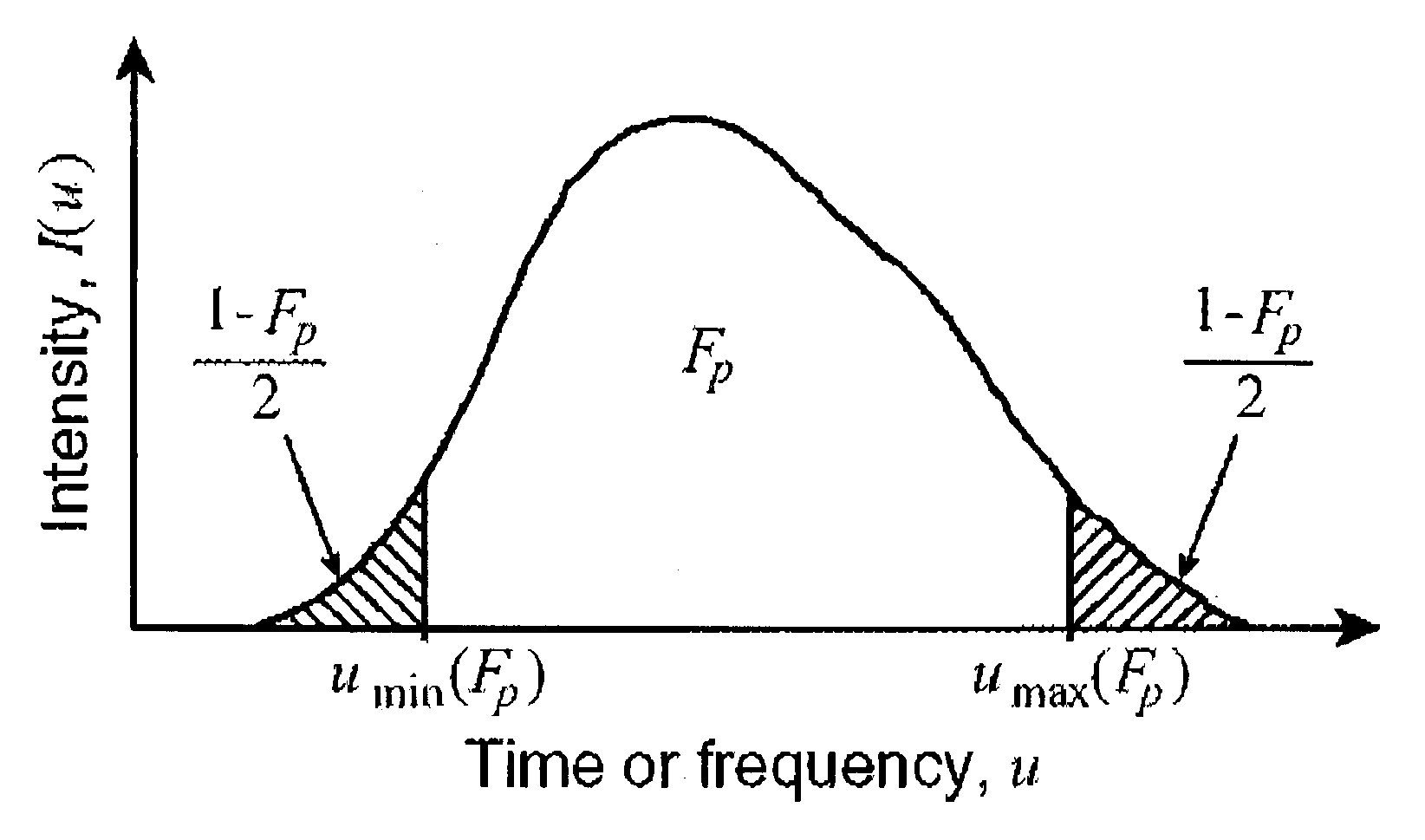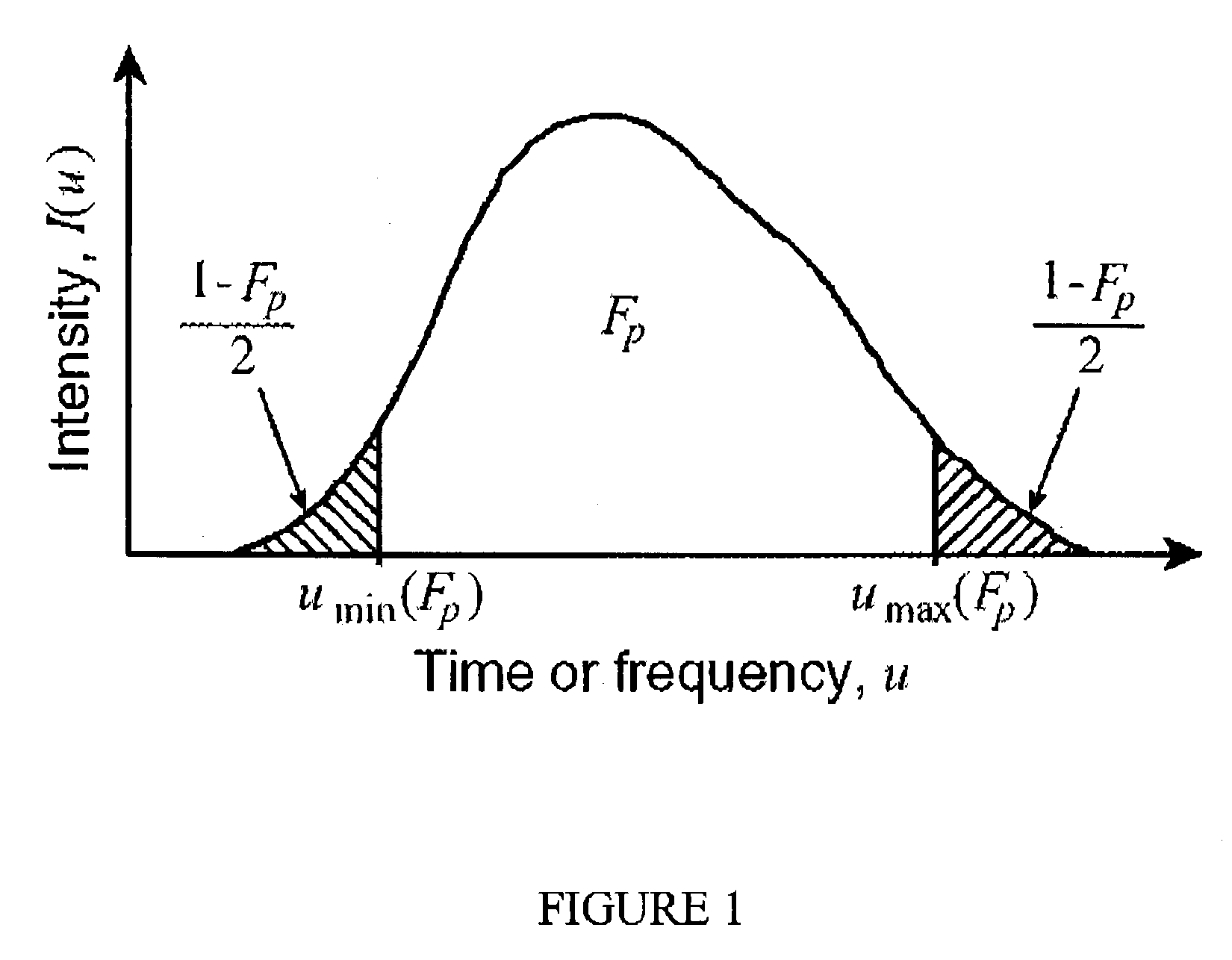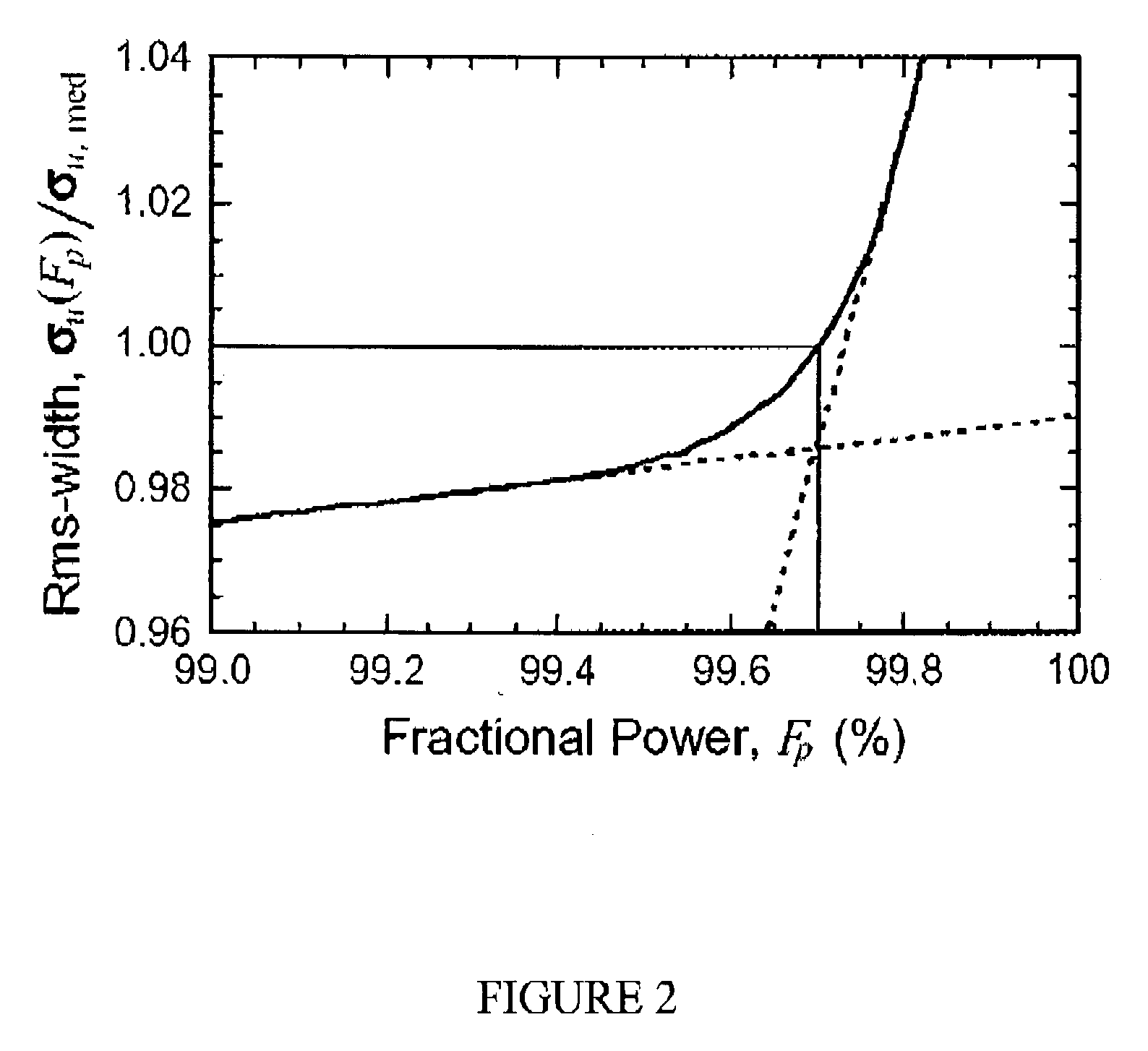Method for characterization of laser pulses using pulse quality factor
a laser pulse and quality factor technology, applied in the field of characterizing laser pulses, can solve the problems of difficult to obtain phase information, not allowing to go much below, and detectors are very expensive instruments
- Summary
- Abstract
- Description
- Claims
- Application Information
AI Technical Summary
Benefits of technology
Problems solved by technology
Method used
Image
Examples
Embodiment Construction
[0041]It is well known that linear pulse propagation in dispersive media is formally equivalent to beam propagation in free space [S. A. Akhmanov, V. A. Vysloukh, and A. S. Chirkin, “Optics of Femtosecond Laser Pulses”, American Institute of Physics, New York, 1992.]. Using this analogy, one can recast in the temporal domain (pulse propagation) many useful concepts first developed in the spatial domain (beam propagation). Such an analogy, however, is valid only for situations where second-order dispersion (GVD) is the dominant pulse modification process, e.g. when higher-order dispersion and nonlinear processes lead to negligible effects on the pulse shape. Based on these considerations, the Pulse Quality Factor or P2 parameter is defined by:
P2=4πσvσt,min (1)
where σv=√{square root over ((v2)−(v)2)}{square root over ((v2)−(v)2)} and σt,min=√{square root over ((t2)−(t)2)}{square root over ((t2)−(t)2)} are the rms-widths. These rms-widths are related to the first- and second-order mom...
PUM
 Login to View More
Login to View More Abstract
Description
Claims
Application Information
 Login to View More
Login to View More - R&D
- Intellectual Property
- Life Sciences
- Materials
- Tech Scout
- Unparalleled Data Quality
- Higher Quality Content
- 60% Fewer Hallucinations
Browse by: Latest US Patents, China's latest patents, Technical Efficacy Thesaurus, Application Domain, Technology Topic, Popular Technical Reports.
© 2025 PatSnap. All rights reserved.Legal|Privacy policy|Modern Slavery Act Transparency Statement|Sitemap|About US| Contact US: help@patsnap.com



